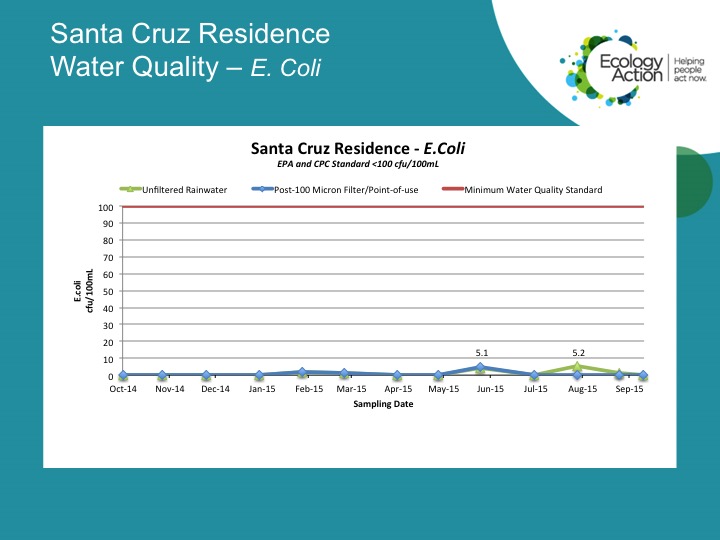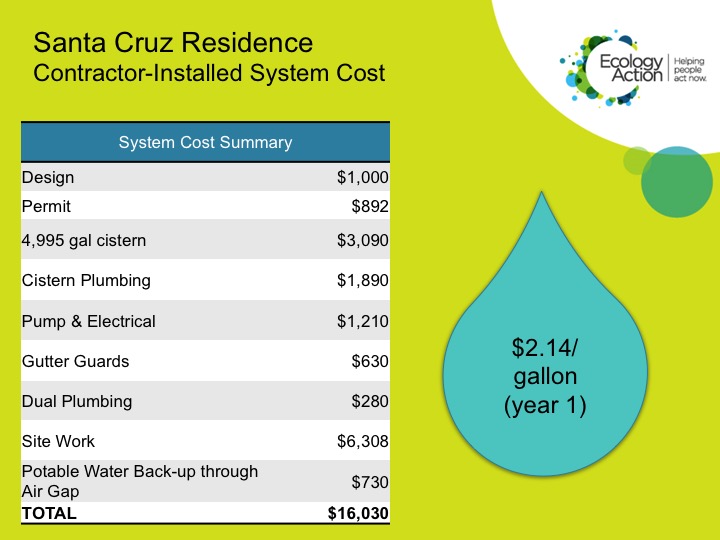SC_CI_01

SC_CI_02
With 1,502 square feet of roof area, this property only needs about ¾” of rainfall per month to meet monthly needs.
6 inches of rain is needed to completely fill the cistern. If cistern is full at the end of January (total rainfall>6”) and no other rain falls, the family has an 8 month supply (Feb-Oct).

SC_CI_03

SC_CI_04
If the tank should ever run out of rain water, potable water will refill the tank through a mechanical valve. The valve closes open when a the weight is heavy and floating in air, and closes when the weight is buoyed by the water. The weight is positioned so that the majority of space in the tank is available for rainwater.
Note that air gap inside the tank was not permitted in any of our installations.

SC_CI_05
E. coli is a subgroup of the fecal coliform group. Most E. coli bacteria are harmless and exist in the
intestines of people and warm-blooded animals. However, some strains can cause illness. The
presence of E. coli in a water sample usually indicates recent fecal contamination. That
means there is a greater risk that pathogens are present.
By comparison, when a freshwater swimming area tests more than 100 cfu/100 mL three times in a row, closure of swimming area is required per EPA guidelines

SC_CI_07

SC_CI_08
Both clothes washer and toilets on-line January 5, 2015.
1503 sq.ft of catchment surface
2015 rainwater harvesting potential = 17,916 gallons
6” of rain needed to fill cistern
Full cistern = 8 month supply
0.74” of rain needed to satisfy monthly use.
In December of 2014, Santa Cruz received 11.5” of rain. The cistern was full again in April 2015. 1,100 gallons left at the end of September (next rainy season)

SC_CI_09

SC_CI_10
Note that dual plumbing only cost an additional $280 during the home remodel.
$2.03/gallon = year one, Installed cost based on total average annual rainwater use of 7,495 gal
